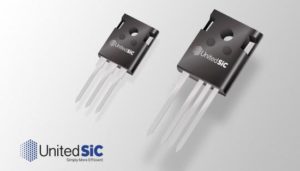Some interesting news this week came from two recent events: the 2019 IEEE International Electron Devices Meeting (IEDM) held in San Francisco from December 7th to 11th, and the Risc-V Summit that took place in San Jose from December 10th to 12th. As usual, AI is the underlying theme for many of these announcements, but other news concern future process nodes and the improving performance of power devices based on new materials.
Lattice and Microchip low power FPGAs with Risc-V cores
SiFive and Lattice will collaborate to enable easy availability of SiFive scalable Core IP for developers using Lattice’s low power FPGA product families, including Lattice’s new 28 nm CrossLink-NX FPGAs. The collaboration will address a diverse array of use cases and markets, from control plane processing in communications infrastructure to data path processing in edge applications. The CrossLink-NX family was designed using the new Lattice Nexus platform, which combines a 28 nm FD-SOI manufacturing process with a new FPGA fabric architecture optimized for low power operation in a small form factor.
And Microchip is opening the Early Access Program for its low power PolarFire system-on-chip FPGA, a platform that offers a hardened real-time, Linux capable, Risc-V-based microprocessor subsystem. Targeted applications include embedded systems at the edge in communications, defense, medical and industrial automation markets.
A Risc-V-based GPU
More news from the Risc-V Summit: Greek company Think Silicon announced a 3D GPU based on the Risc-V instruction set architecture, dubbed NEOX|V. According to the company, the usage of a common ISA between the main system CPUs and GPUs will allow new programming paradigms by dynamically balancing computation load between these processing elements. This will also enable a new class of SoCs providing benefits in terms of size, power and openness. NEOX|V offers a framework for integrating custom user instructions, and developers will be able to leverage the growing set of software tools in the Risc-V ecosystem.
Enflame targets AI training acceleration
Most AI startups focus on inference acceleration; Chinese startup Enflame Technology, instead, has announced a new deep learning accelerator for data center training. The 14 billion transistors chip is built with Globalfoundries’ 12LP FinFET process and uses 2.5D packaging for integration with high bandwidth memory (HBM2). Based on a reconfigurable chip design approach, Enflame’s Deep Thinking Unit features 32 scalable intelligent processors, arranged in four clusters. As stated in a press release, Enflame is focused on accelerating on-chip communications to increase the speed and accuracy of neural network training while reducing data center power consumption. The press release does not provide details about the processor architecture implemented by Enflame. The chip supports a broad range of data types: FP32, FP16, BF16, Int8, Int16, Int32, etc. It also supports the PCIe 4.0 interface and the “Enflame Smart Link” high-speed interconnection.
CEA-Leti’s RRAM neuromorphic chip
A new chip has joined the neuromorphic effort carried out by universities and research institutes around the world (see EDACafe overview): at the 2019 IEDM conference, French research institute CEA-Leti presented a fully integrated bio-inspired neural network, combining resistive-RAM-based synapses and analog spiking neurons. Researchers pointed out that, to date, demonstrations of RRAM-based spiking neural networks have been limited to system-level simulations calibrated on experimental data. Leti managed to integrate the entire network on-chip: no part is emulated or replaced by an external circuit. The test chip is fabricated in 130nm CMOS process, leveraging CEA-Leti’s expertise in manufacturing RRAM memories on top of CMOS wafers. The functionality of this proof-of-concept circuit was demonstrated through handwritten digits classification.

SEM cross-section of the RRAM cell monolithically integrated on the top of 130nm CMOS. Image credit: CEA-Leti
TowerJazz’s memristor-based AI core
Another AI-related announcement involving innovative technologies comes from Israel, where TowerJazz foundry and the Technion – the Israel Institute of Technology – have jointly developed a technological platform that utilizes memristor devices featuring analog memory storage and computing capabilities, enabling ultra-low power AI cores. The platform is based on TowerJazz’s commercial patented Y-Flash NVM on its well-established 0.18um CMOS technology. Single poly Y-Flash floating gate NVM transistors, originally designed for digital data storage, were converted into two-terminal analog devices operated in the energy-efficient sub-threshold regime. The analog memristors are tuned using optimized switching voltages and times to achieve 65 discrete resistive levels. According to the team, this platform enables several orders of magnitude lower power consumption compared to existing digital solutions, and is very cost effective as it can be implemented in less advanced technology nodes. Potential applications include IoT edge devices, fingerprint sensors, face and audio recognition.
Imec’s forksheet device pushes scaling towards 2nm
At the already mentioned IEDM conference, Belgian research institute imec presented the first standard cell simulation results of its “forksheet device” designed for sub-3nm logic technology nodes. Compared to gate-all-around nanosheet devices, the reduced n-to-p spacing results in a 10 percent performance increase. When combined with scaling boosters, the new device architecture will bring logic standard cell height down to 4.3 tracks, which – combined with cell template optimization – can result in more than 20 percent area reduction. According to imec, these results value the forksheet architecture as a potential solution to extend the scalability of nanosheet structures beyond the 3nm logic technology node. The process flow for the forksheet is similar to the one of a nanosheet device, with only limited additional process steps.

Layout of SRAM half cells for a) FinFET, b) gate-all-around nanosheet and c) forksheet. Image credit: imec
UnitedSiC’s low Rdos(on) SiC FETs
UnitedSiC is introducing four new silicon carbide power FETs, with Rds(on) levels as low as 7mohms. Of the four new UF3C SiC FET devices, one is rated at 650V with Rds(on) of 7mohm, and three rated at 1200V with Rds(on) of 9 and 16mohm. All are available in the TO247 package. The new devices combine a SiC JFET and a cascode-optimized Si MOSFET, a circuit configuration that can be driven with the same gate voltages as Si IGBTs, Si MOSFETS and SiC MOSFETs. According to UnitedSiC, the standard drive characteristics and packaging allow to use the new SiC FETs as drop-in replacements for less efficient parts in a wide variety of applications, with little or no additional design effort. For example, existing inverter designs could achieve a higher efficiency without reinventing their basic circuit architecture, by switching at the same speed. Target applications include electric vehicle inverters, high-power DC/DC converters, high-current battery chargers and solid-state circuit breakers.









